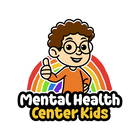|
Key Takeaways:
- Cognitive flexibility refers to a child’s ability to adapt to new situations. It helps with problem-solving, emotional regulation, and adaptability.
- Children start developing cognitive flexibility in infancy, with some being more naturally flexible than others.
- You can nurture your child’s cognitive flexibility by modeling it in real life, practicing perspective-taking, and normalizing mistakes.
|
Imagine a tree branch during a storm. A rigid one might snap in half almost instantly, while a flexible one will bend with the wind and remain intact. This simple analogy helps us understand what cognitive flexibility might look like in a child, but how do they learn to strengthen this skill?
In this article, we’ll explore the fundamentals of cognitive flexibility, why it matters, and what you can do to help your child cultivate this skill.
What is Cognitive Flexibility?
Cognitive flexibility, also known as cognitive shifting, refers to the brain’s ability to adapt to new, changing, or unplanned events [*]. This skill, considered an executive function, involves the ability to shift between tasks quickly, think about multiple ideas at once, and adapt thinking to match new information.
Why Cognitive Flexibility Matters
Cognitive flexibility keeps children mentally agile and enables them to tackle new scenarios confidently, with a desire to learn. Here are other reasons why cognitive flexibility is an essential life skill for kids.
Helps with problem-solving and creativity
With mental flexibility, children become better problem solvers. They can view a problem from different perspectives and brainstorm creative solutions. This open-mindedness prevents children from hyper-fixating on a single solution and makes them more likely to identify alternative strategies.
Helps kids adapt to changing situations
When children exercise cognitive flexibility, they can manage their emotions in dynamic situations better. They avoid staying stuck in negative headspaces and are more proactive about finding ways to move on.
Builds emotional regulation
Cognitive flexibility builds emotional regulation by providing children with the mental tools to interpret and understand why they might feel a certain way at a particular time. When children learn to identify distorted thoughts, they become more attuned to reality and can develop healthier coping mechanisms.
What Cognitive Flexibility Looks Like
Cognitive flexibility manifests in daily life, and you may not even notice it when it happens. In children, cognitive flexibility can look as simple as being able to multitask. For example, your child might exercise cognitive flexibility when they can answer a question while solving a homework problem.
Your child might also demonstrate cognitive flexibility when making friends of different cultural or religious backgrounds.
Other ways you might observe cognitive flexibility in your child include:
- Regulating stress in high-pressure situations through coping mechanisms
- Empathizing with others and understanding their perspective
- Thinking outside the box or finding unconventional uses for objects and ideas
- Adjusting to new routines with curiosity and a positive attitude
- Negotiating and finding compromises during disagreements
How to Help Kids Develop Cognitive Flexibility
Parents play an important role in their child’s ability to develop cognitive flexibility. How you interact with your child influences how adaptable they become. Here are some ways you can help your child think flexibly.
Model cognitive flexibility
Model flexible thinking in daily life by thinking out loud and embracing your mistakes. When you make an error, for instance, acknowledge it and adapt. Suppose you’re driving to the park and miss a turn. You might say out loud, “Oops! I didn’t see the turn. That’s okay, we can turn around and make it this time.”
You can also explain your thought processes out loud, such as when you’re adjusting a recipe at home or finding a solution to a simple problem.
Expose them to new experiences
Something as simple as exposing your child to new places can encourage them to adapt to new environments. You can also introduce them to new foods and different cuisines to promote open-mindedness.
Play to your child’s interests. If they express wanting to try a new hobby or sport, indulge them! They can dabble in arts and crafts, learn a musical instrument, or experiment with different hobbies.
Practice perspective-taking
Perspective-taking pushes children to step out of their comfort zones and consider how someone else might experience a specific situation. This will require your child to move beyond their thoughts and experiences.
Start simple. Ask “why” questions applicable to daily life and what you observe. For example, if you’re watching a TV show, ask your child thoughtful questions like “Why do you think the character is sad?”
You can also engage in a more hands-on perspective-taking activity, such as role-playing. Create simple scenarios your child might experience in real life, such as a friend deciding they don’t want to share their toy or having a disagreement at school. Switch roles to give your child the opportunity to explore all perspectives and debrief after the activity.
Value effort and learning from mistakes
Focusing on your child’s efforts and not just their successes fosters a growth mindset that inspires them to love learning. Redirect your praise from the outcome to your child’s effort. Be specific about your praise. For example, you might say, “You did such a great job on your math homework! You kept going, even when it was difficult.”
When it comes to mistakes, normalize them! Remind your child that mistakes are how they learn and that they can use them to figure out how to do better in the future.
The Bottom Line
When a child can think flexibly, they’re more likely to succeed in school, develop lasting friendships, and problem-solve independently. Nurture this skill a little every day, and your child will learn how best to approach problems from different perspectives.
Equip your child with more learning tools by exploring our growth mindset posters. You can use these posters at home and in the classroom to inspire your child to stay open-minded and curious.
FAQs About Cognitive Flexibility
At what age does cognitive flexibility start developing?
Cognitive flexibility starts developing as early as infancy. The first instances of cognitive flexibility are apparent when infants learn to shift their attention from one thing to another. However, cognitive flexibility occurs most rapidly when children are between 3 and 5 [*]. At this age, they start learning about rules, boundaries, and task-switching.
Are some kids naturally more cognitively flexible than others?
Some kids are naturally more cognitively flexible than others as a result of genetics, home environment, access to education, lifestyle, and health. Children are more likely to develop cognitive flexibility more rapidly in environments where they get enough sleep, good nutrition, and regular physical activity.
How do I know if my child struggles with cognitive flexibility?
Your child might struggle with cognitive flexibility if they struggle to manage changes and transitions. For example, a common symptom of delayed cognitive flexibility is when children have meltdowns as plans change. Your child may also struggle with this skill if they tend to stay stuck on a single idea, behavior, or task. This type of inflexibility is called perseveration [*].
Sources:
- “Cognitive Flexibility - an overview.” ScienceDirect Topics, 2019.
- Wan C, Cai H, Li F. “Age Three: Milestone in the Development of Cognitive Flexibility.” Behavioral Sciences, 2024.
- Carroll DJ, Blakey E, FitzGibbon L. “Cognitive Flexibility in Young Children: Beyond Perseveration.” Child Development Perspectives, 2016.





















































